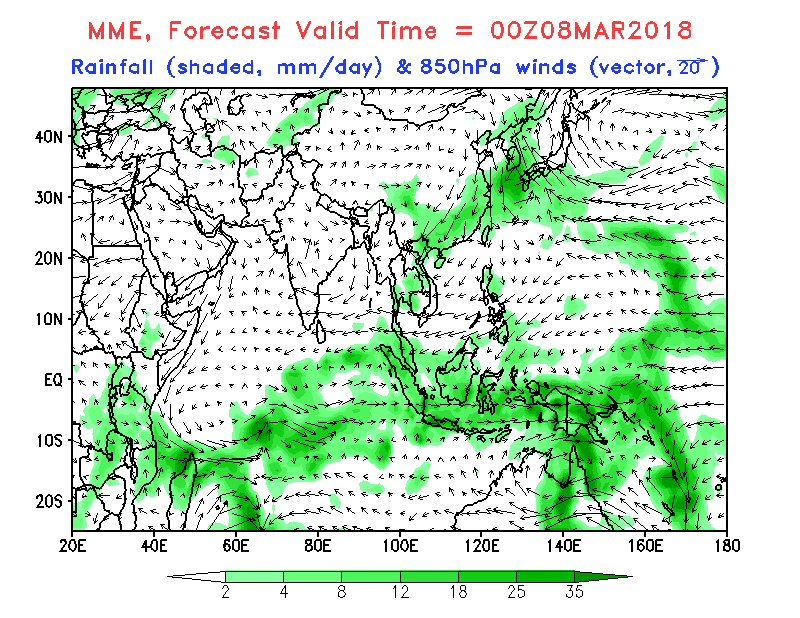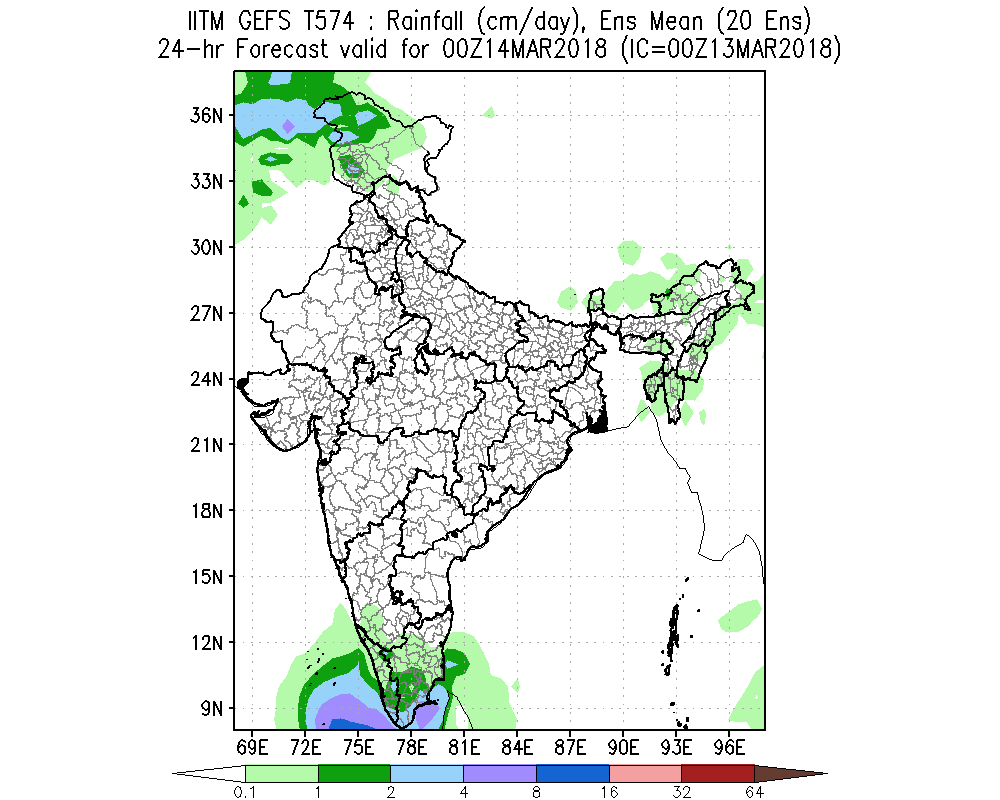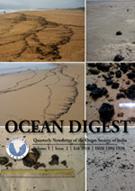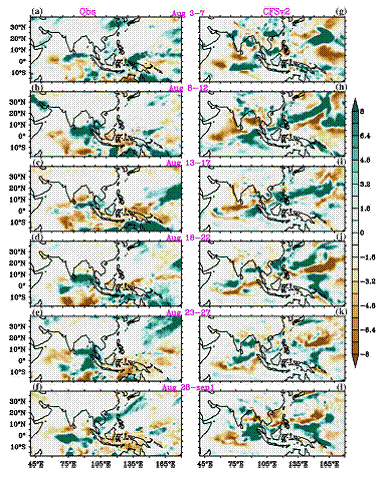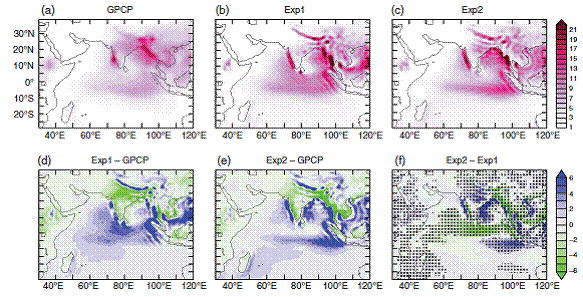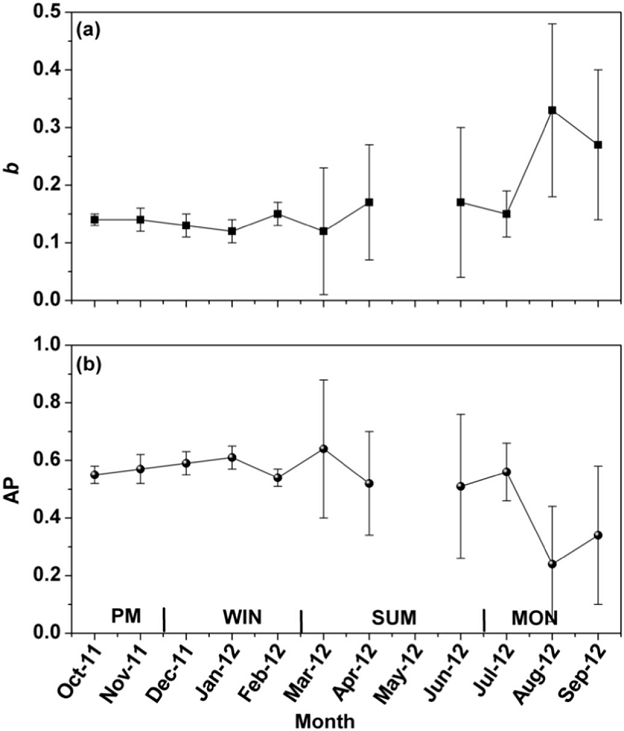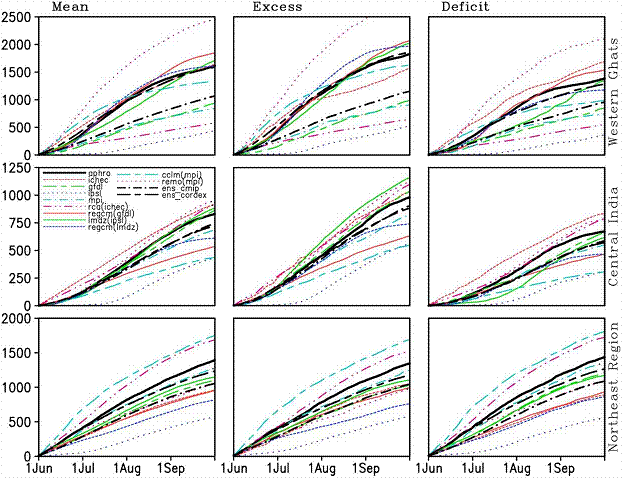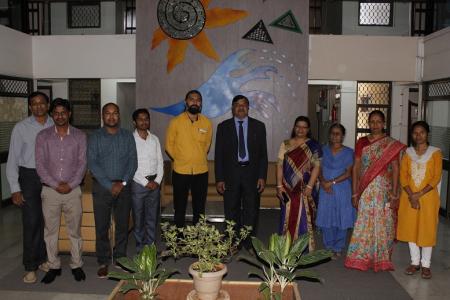SCIENCE LECTURE SERIES
Prof. R. Ananthakrishnan Seminar Series
Lecture-1 (15 Jan. 2018)
Lecture-2 (9 Mar. 2018)
Lecture-3 (12 Apr. 2018) 
RAC Meeting : POSTERS
IITM Research Report
Diagnostics and Real-Time Extended Range Prediction of Heat Waves over India, March 2018, Sushmita Joseph et.al.) 
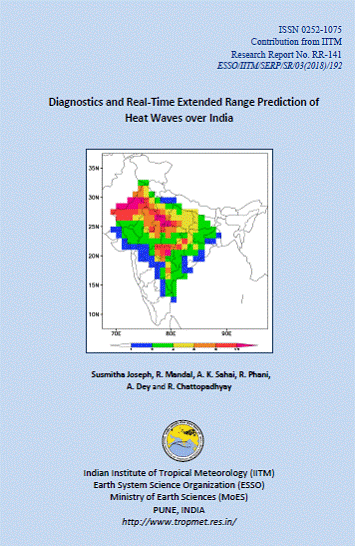 Read More
Read More
IITM Publication Highlights
Biological production in the Indian Ocean upwelling zones, Part - I: Refined estimation via the use of a variable compensation depth in ocean carbon models
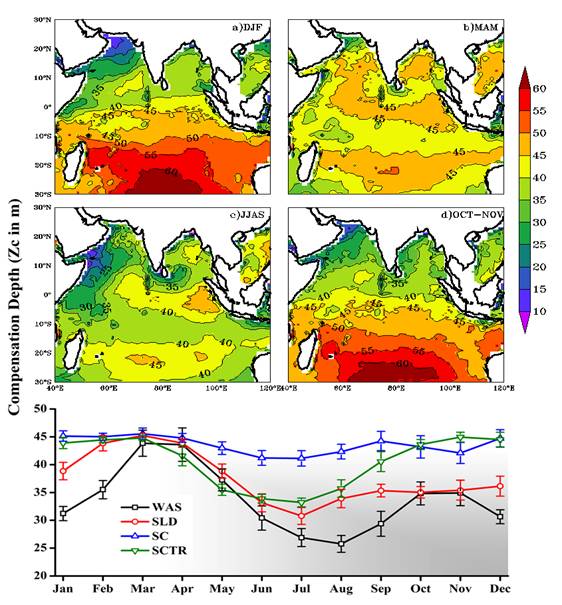 Biological modeling approach adopted by the Ocean Carbon-cycle Model Inter-comparison Project (OCMIP-II) provided amazingly simple but surprisingly accurate rendition of the annual mean carbon cycle for the global ocean. Nonetheless, OCMIP models are known to have seasonal biases which are typically attributed to their bulk parameterization of 'compensation depth'. Utilizing the criteria of surface Chl-a based attenuation of solar radiation and the minimum solar radiation required for production, we have proposed a new parameterization for a spatially and temporally varying 'compensation depth' which captures the seasonality in the production zone reasonably well. This new parameterization is shown to improve the seasonality of CO2 fluxes, surface ocean pCO2, biological export and new production in the major upwelling zones of the Indian Ocean.
The seasonally varying compensation depth enriches the nutrient concentration in the upper ocean yielding more faithful biological exports which in turn leads to an accurate seasonality in the carbon cycle. Thus the new parameterization of variable compensation helps in achieving a seasonal balance in export and new production and improved the strength of both solubility and biological pumps for a better representation of carbon cycle.
(Sreeush M G., Valsala V., Pentakota S., Prasad K. V. S. R. and Murtugudde, R, Biogeosciences,, April 2018)
Biological modeling approach adopted by the Ocean Carbon-cycle Model Inter-comparison Project (OCMIP-II) provided amazingly simple but surprisingly accurate rendition of the annual mean carbon cycle for the global ocean. Nonetheless, OCMIP models are known to have seasonal biases which are typically attributed to their bulk parameterization of 'compensation depth'. Utilizing the criteria of surface Chl-a based attenuation of solar radiation and the minimum solar radiation required for production, we have proposed a new parameterization for a spatially and temporally varying 'compensation depth' which captures the seasonality in the production zone reasonably well. This new parameterization is shown to improve the seasonality of CO2 fluxes, surface ocean pCO2, biological export and new production in the major upwelling zones of the Indian Ocean.
The seasonally varying compensation depth enriches the nutrient concentration in the upper ocean yielding more faithful biological exports which in turn leads to an accurate seasonality in the carbon cycle. Thus the new parameterization of variable compensation helps in achieving a seasonal balance in export and new production and improved the strength of both solubility and biological pumps for a better representation of carbon cycle.
(Sreeush M G., Valsala V., Pentakota S., Prasad K. V. S. R. and Murtugudde, R, Biogeosciences,, April 2018) 
How Does Indian Teak respond to Synoptic Rainfall Variation in multi-decadal Time Scale?
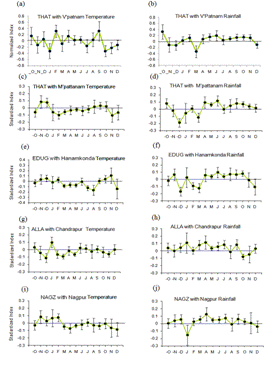 Monsoon (June-October) and Post monsoon (October-.November) rainfall amount in south east India exhibit distinct spatial and temporal trends. However, studies are extremely rare on whether similar synoptic scale rainfall variation also exist in multi-decadal time scale beyond the period of instrumental observation. This is possibly due to paucity of annually resolved proxy data from suitable locations. Towards this, tree ring data (~200 years) of Indian Teak (Tectona Grandis L.f.) generated from four locations is presented in this study. The locations are situated from east coast of India to Inland along a south east North West transect. The primary objective of this work is to understand how ring width index data respond to temperature and precipitation in synoptic scale. Ring width data show moderately positive response to monsoon rainfall and negative response to summer (March- May) temperature for all stations suggesting moisture deficit in warm summer.
Ring width indices also exhibit positive response with post monsoon rainfall at coastal location but the response gradually reduces towards inland. This preliminary study, thus, suggests that Indian teak has a potential to capture signals of the synoptic variation of post monsoon rainfall from coast to inland.
(Sengupta S., Borgaonkar H.P., Joy R.M., Ram S., Theor. Appl. Climatol., November, 2017)
Monsoon (June-October) and Post monsoon (October-.November) rainfall amount in south east India exhibit distinct spatial and temporal trends. However, studies are extremely rare on whether similar synoptic scale rainfall variation also exist in multi-decadal time scale beyond the period of instrumental observation. This is possibly due to paucity of annually resolved proxy data from suitable locations. Towards this, tree ring data (~200 years) of Indian Teak (Tectona Grandis L.f.) generated from four locations is presented in this study. The locations are situated from east coast of India to Inland along a south east North West transect. The primary objective of this work is to understand how ring width index data respond to temperature and precipitation in synoptic scale. Ring width data show moderately positive response to monsoon rainfall and negative response to summer (March- May) temperature for all stations suggesting moisture deficit in warm summer.
Ring width indices also exhibit positive response with post monsoon rainfall at coastal location but the response gradually reduces towards inland. This preliminary study, thus, suggests that Indian teak has a potential to capture signals of the synoptic variation of post monsoon rainfall from coast to inland.
(Sengupta S., Borgaonkar H.P., Joy R.M., Ram S., Theor. Appl. Climatol., November, 2017)
Linkages of subtropical stratospheric intraseasonal intrusions with Indian summer monsoon deficit rainfall
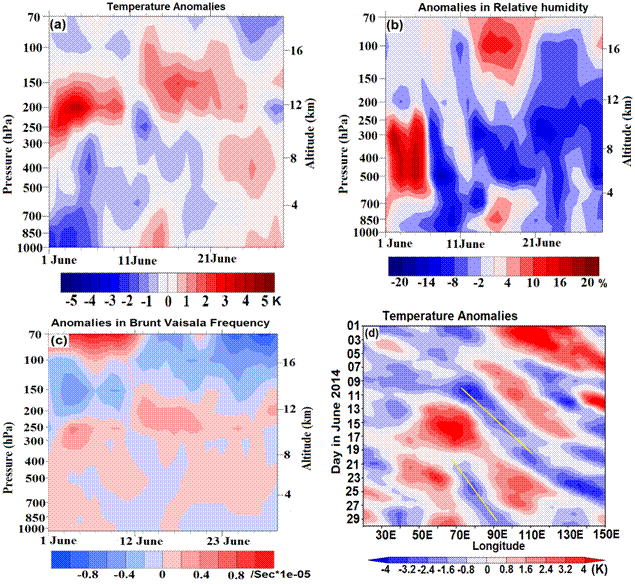 The authors investigate the life cycle of a strong subtropical stratospheric intrusion event and propose a hypothesis through which might reduce the intensity of the Indian-summer-monsoon rainfall (ISMR) after the monsoon onset during June 2014. The diagnostic analysis of ERA-Interim data revealed that stratospheric intrusion occurs in the region of Subtropical Westerly Jet (SWJ) due to Rossby Wave Breaking (RWB). The RWB event is associated with eddy shedding. These eddies transport extratropical stratospheric mass and energy fluxes downward and southward to North India (NI). As a result, the intrusion spread dry, cold and ozone rich air deep into the troposphere (~500hPa) over the NI. It enhances the static stability and weakens the North-South upper tropospheric temperature gradient. The intrusion of cold and dry air persisted for the entire June which might have inhibited northward propagation of ISM convection and could be responsible for prolonged hiatus in northward phase propagation of the ISM after onset. We also investigate the relation between stratospheric intrusion events and ISMR from long term data (1979-2007). Our analysis shows that the stronger negative anomalies of rainfall are associated with stratospheric intrusions during break spells. Thus study reveals that stratospheric intrusion is an important factor that may influence ISMR deficit.
(Fadnavis S., Chattopadhyay R., Journal of Climate, July 2017)
The authors investigate the life cycle of a strong subtropical stratospheric intrusion event and propose a hypothesis through which might reduce the intensity of the Indian-summer-monsoon rainfall (ISMR) after the monsoon onset during June 2014. The diagnostic analysis of ERA-Interim data revealed that stratospheric intrusion occurs in the region of Subtropical Westerly Jet (SWJ) due to Rossby Wave Breaking (RWB). The RWB event is associated with eddy shedding. These eddies transport extratropical stratospheric mass and energy fluxes downward and southward to North India (NI). As a result, the intrusion spread dry, cold and ozone rich air deep into the troposphere (~500hPa) over the NI. It enhances the static stability and weakens the North-South upper tropospheric temperature gradient. The intrusion of cold and dry air persisted for the entire June which might have inhibited northward propagation of ISM convection and could be responsible for prolonged hiatus in northward phase propagation of the ISM after onset. We also investigate the relation between stratospheric intrusion events and ISMR from long term data (1979-2007). Our analysis shows that the stronger negative anomalies of rainfall are associated with stratospheric intrusions during break spells. Thus study reveals that stratospheric intrusion is an important factor that may influence ISMR deficit.
(Fadnavis S., Chattopadhyay R., Journal of Climate, July 2017)
New Publications
IITM Events

IITM Film "SAFAR -An Environmental Warrior" received the "Certificate of Merit
A short film on SAFAR- Ahmedabad entitled, "SAFAR -An Environmental Warrior" received the "Certificate of Merit" by Vigyan Prasar, DST, Govt. of India, awarded during 8th National Science Film Festival -2018, held at University of Gauhati, Guwahati (Assam) during February 20-24, 2018. The film was shortlisted by Vigyan Prasar for screening and nominated under category "A" (films by Govt. and non-Govt. Institutions) during 8th NSFF 2018.
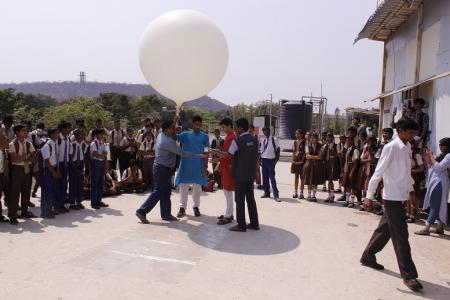
National Science Day 2018 celebration at IITM
IITM celebrated National Science day 2018 as an open day on 28th February at its premises. Students from various schools and colleges, and public in general visited the institute on this occasion. Visitors were taken on guided tour to different laboratories and facilities at the institute. IITM scientists and researchers demonstrated and explained different aspects of weather and climate sciences to these visitors.
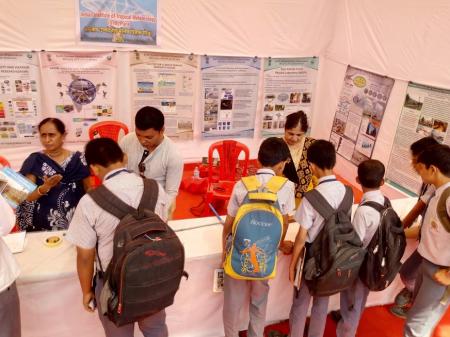
IITM Participation at GMRT for Science Day 2018
IITM participated in a National Science Day Exhibition organized by NCRA, TIFR. The exhinition took place at GMRT, Khodad, Narayangaon during 28 February and 1 March 2018. More than 15000 students/general public visited the Scientific stalls of various schools and colleges, universities, institutes
